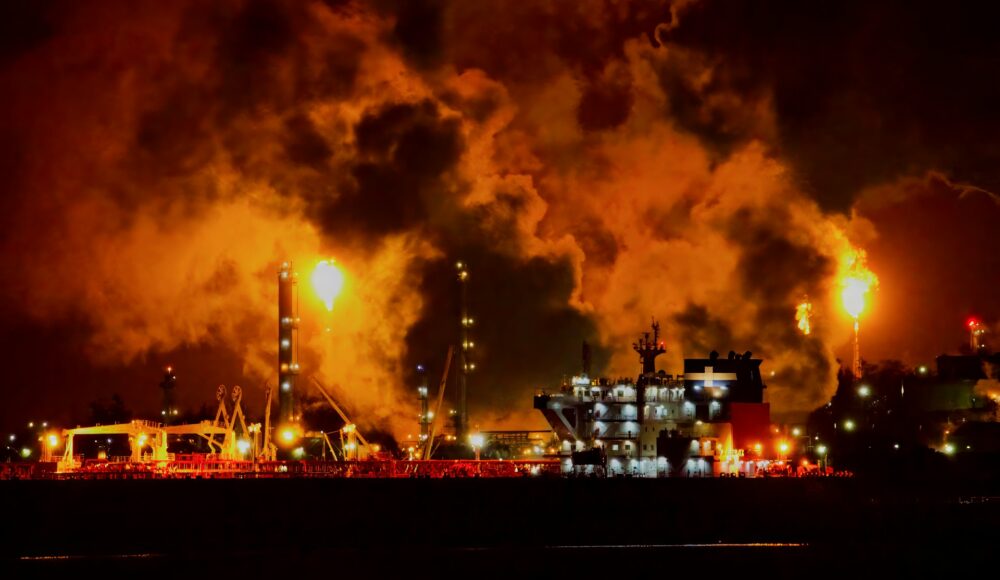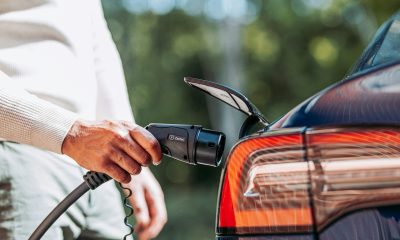Impact Investing
Greenhouse Gases in the Atmosphere Continue to Increase: New Record for CO2 at 420 ppm in 2023
The declining ability of ecosystems to absorb CO₂ is creating a climate feedback loop that intensifies global warming, worsened by events like El Niño. From 1990-2023, greenhouse gas effects grew by 51.5%, with CO₂ as the main contributor. Methane and nitrous oxide emissions are also rising, driven by both human activity and natural sources, exacerbating climate risks.

Greenhouse gas concentrations in the atmosphere continue to increase and CO2 in 2023 reached a record level of 420 parts per million (ppm), an increase of 151% compared to pre-industrial levels. This was reported by the World Meteorological Organization (WMO).
The causes of this increase, according to the international organization, are large-scale vegetation fires, a possible reduction in absorption by forests and high human emissions. In 2022, CO2 was at 417.9 ppm, in 2021 at 415.7 ppm. In 1750, it was at 280 ppm. Over the last 20 years, carbon dioxide in the atmosphere has increased by 11.4%.
The WMO Greenhouse Gas Bulletin also reports that the global average concentration of methane has reached 1,934 ppb, while nitrous oxide has reached 336.9 ppb, corresponding to 265% and 125% of pre-industrial levels, respectively.
Greenhouse gas concentrations in the atmosphere continue to increase
WMO Secretary-General Celeste Saulo stressed that the continuing increase in greenhouse gas concentrations should be a wake-up call for policy makers, highlighting that the Paris Agreement goal of limiting global warming to below 2°C, aiming for 1.5°C, is increasingly out of reach. Every increase in CO2 and every fraction of a degree of temperature has concrete impacts on human life and the global ecosystem.
In 2023, the annual increase in CO2 was 2.3 ppm, marking the twelfth consecutive year with an increase of more than 2 ppm. This increase was higher than in 2022, but lower than the previous three years.
1 The reduction in the capacity of ecosystems to retain CO2 triggers a climate feedback loop
2 Carbon dioxide (CO2)
3 Methane (CH4)
4 Nitrous Oxide (N2O)
The reduction in the capacity of ecosystems to retain CO2 triggers a climate feedback loop
The bulletin also warns that climate change and natural variability could trigger a self-perpetuating climate feedback loop, in which ecosystems become increasing sources of greenhouse gases. Phenomena such as El Niño , associated with wildfires and dry vegetation, can reduce the effectiveness of natural carbon sinks and promote the release of CO2, while a warmer ocean could absorb less, thus accelerating global warming. These feedback loops are a key concern for society.
From 1990 to 2023, the radiative effect of greenhouse gases increased by 51.5%, with CO2 responsible for 81% of this increase. Because CO2 has an extremely long atmospheric lifetime, the high temperatures already observed will persist for decades even if emissions were rapidly reduced to zero . The last time Earth experienced similar levels of CO2 was 3-5 million years ago, with temperatures 2-3°C higher and sea levels 10-20 meters higher than today. Human life on Earth was not present.
Carbon dioxide (CO2)
CO2 is responsible for 64% of global warming, mainly due to fossil fuel combustion and cement production. In 2023, the increase in CO2 in the atmosphere was higher than in 2022 (2.3 ppm), marking the twelfth consecutive year with an increase above 2 ppm. However, this increase was lower than in the previous three years. Natural factors, such as the El Niño–Southern Oscillation, influence the annual variation of CO2 through photosynthetic absorption, respiratory release and wildfires. In 2023, carbon emissions from global wildfires were 16% higher than average, with Canada and Australia among the most affected areas.
These details show how CO₂ concentration has increased steadily over nearly four decades, with seasonal variations due to natural phenomena and a long-term growth trend that is mainly influenced by human emissions.
Methane (CH4)
Methane is a potent greenhouse gas that persists in the atmosphere for about a decade and contributes 16% of the long-lived greenhouse gas effect. About 40% of methane emissions are from natural sources (wetlands and termites) and 60% are from anthropogenic sources (ruminant farming, rice farming, fossil fuel extraction). The increase in methane in 2023 was lower than in 2022 but still the highest in the last five years, partly due to climate feedbacks that amplify emissions from natural systems such as wetlands.
In the plot of global CH₄ (methane) concentrations (a) and its growth rate (b) from 1984 to 2023, the increase in subsequent annual means is shown as shaded columns in (b). The red line in (a) represents the monthly mean of CH₄ with seasonal variation eliminated, while the dots and the blue line indicate the actual monthly means, including seasonal fluctuations.
This scheme highlights how methane concentrations have increased significantly over the long term, despite some interannual variations. The growth is attributable to a combination of natural and anthropogenic sources, with large contributions from sectors such as agriculture, fossil fuel extraction and wetland emissions.
Nitrous Oxide (N2O)
Nitrous oxide is both a potent greenhouse gas and an ozone-depleting substance , accounting for about 6% of the long-lived greenhouse gas. Emissions come from natural (60%) and anthropogenic (40%) sources, including oceans, soils, biomass burning, fertilizer use, and industrial processes. The increase in N2O concentrations in 2023 was less than that between 2021 and 2022, which was the largest increase in recent history.
__
(Featured image by Chris LeBoutillier via Unsplash)
DISCLAIMER: This article was written by a third party contributor and does not reflect the opinion of Born2Invest, its management, staff or its associates. Please review our disclaimer for more information.
This article may include forward-looking statements. These forward-looking statements generally are identified by the words “believe,” “project,” “estimate,” “become,” “plan,” “will,” and similar expressions. These forward-looking statements involve known and unknown risks as well as uncertainties, including those discussed in the following cautionary statements and elsewhere in this article and on this site. Although the Company may believe that its expectations are based on reasonable assumptions, the actual results that the Company may achieve may differ materially from any forward-looking statements, which reflect the opinions of the management of the Company only as of the date hereof. Additionally, please make sure to read these important disclosures.
First published in ESG NEWS. A third-party contributor translated and adapted the article from the original. In case of discrepancy, the original will prevail.
Although we made reasonable efforts to provide accurate translations, some parts may be incorrect. Born2Invest assumes no responsibility for errors, omissions or ambiguities in the translations provided on this website. Any person or entity relying on translated content does so at their own risk. Born2Invest is not responsible for losses caused by such reliance on the accuracy or reliability of translated information. If you wish to report an error or inaccuracy in the translation, we encourage you to contact us

-

 Cannabis1 week ago
Cannabis1 week agoLuxembourg’s Cannabis Paradox: Legal at Home, Restricted Everywhere Else
-

 Crowdfunding1 week ago
Crowdfunding1 week agoCommunity Energies 2026: Funding Projects Combating Youth Loneliness
-

 Cannabis3 days ago
Cannabis3 days agoMedical Cannabis in Poland 2025: Growth, Stability, and Wider Access
-

 Impact Investing1 week ago
Impact Investing1 week agoEU End-of-Life Vehicles Rule Pushes Cars Toward a Circular Economy
























